Do you love podcasts? Are you looking for a new gig? Perhaps, you’re ready to change your career and dive into the world of podcast editing!
Find out how much money you can make from podcast editing and what skills you need to edit a podcast and succeed in the industry. Podcast editing is a lucrative job if done well. Keep reading and find out everything you need to know about how to become a podcast editor.
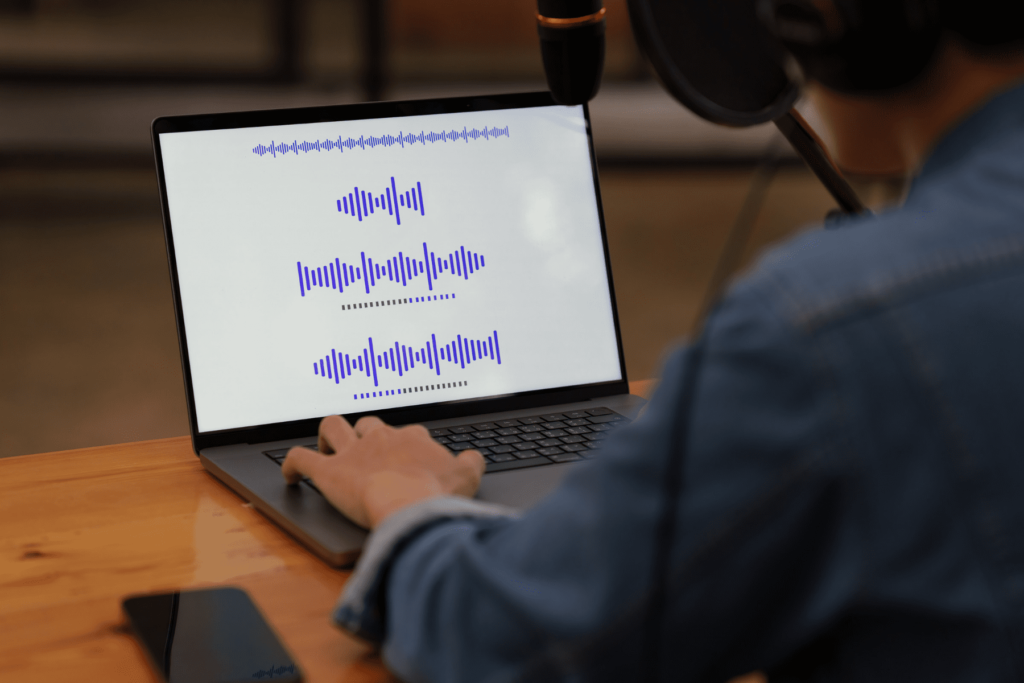
Contents
What Does A Podcast Editor Do?
Following a podcast script or outline, you edit and mix pre-recorded audio files for the given podcast episode.
The main task of podcast editing is to combine audio tracks, equalize audio, remove background hum/buzz, add intro/outros, theme music, and remove any other noises. All of this needs to be done well before you can even think of podcast distribution.
But once you have learned the production process it will become quicker and easier to do, and you can make money podcast editing. Depending on the podcast type, you may also have to edit videos. This post will only cover podcast editing.
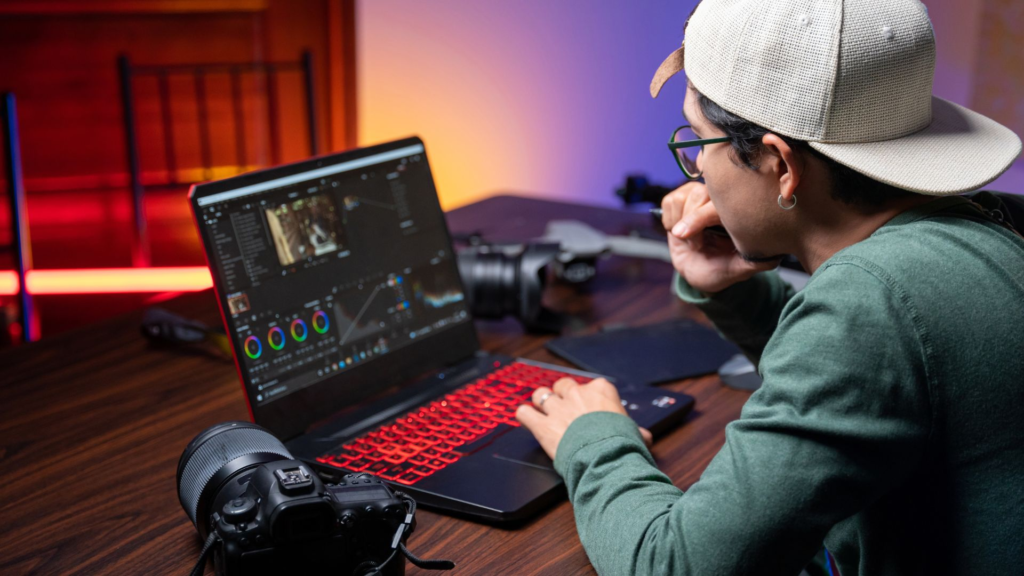
7 Steps To Edit Podcast Episodes
Podcast episodes have become a popular medium for delivering information and entertainment to a growing audience. With the proliferation of podcasts, the competition has also increased. To stand out from the crowd, it’s crucial for podcast professionals to deliver high-quality podcast content that captivates and engages listeners.
One of the critical aspects of podcast editing is the sound of the podcast audio. This process ensures that the final product is polished, professional, and with high audio quality. To do that you’ll use a DAW or digital audio workstation for podcast editing.
The best podcast editing software is Descript. Others do podcast editing with Audacity or GarageBand if you want free podcast editing software. Or Adobe audition if you have more audio editing skills and are prepared to pay a subscription fee. Before you begin editing make sure you have the proper tools and understand how to use them.
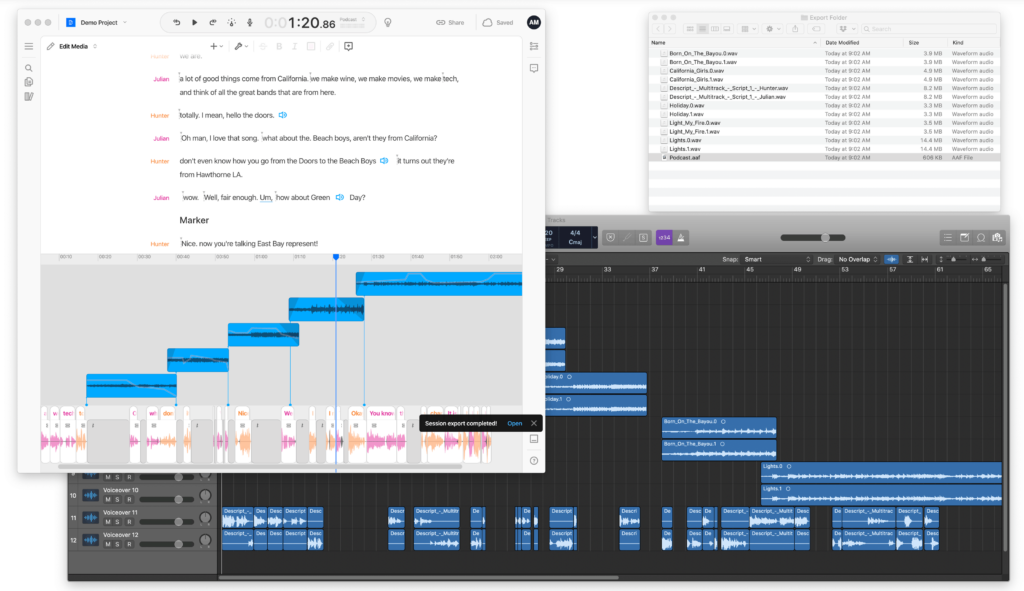
Editing audio involves the mixing process, removing unwanted noise, making basic edits, and how to add music. Do this and your podcast editing will result in great sound quality!
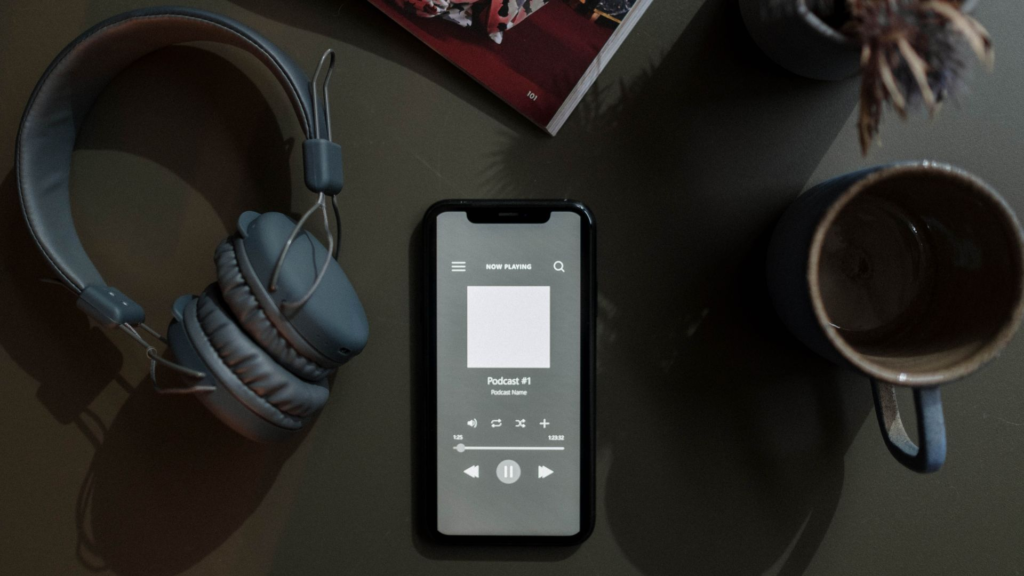
Before You Record
If you can, talk with the podcast host before, or better still be in the recording studio with the podcast host, you can give them some advice and tips that will lead to very little editing for you.
These include;
- Choosing a good microphone. Check out our microphone recommendations.
- Good microphone technique.
- Use a pop filter.
- Use the podcast software correctly (If you’re not in a professional studio the Zoom Podtrak P4 is an easy-to-use audio interface)
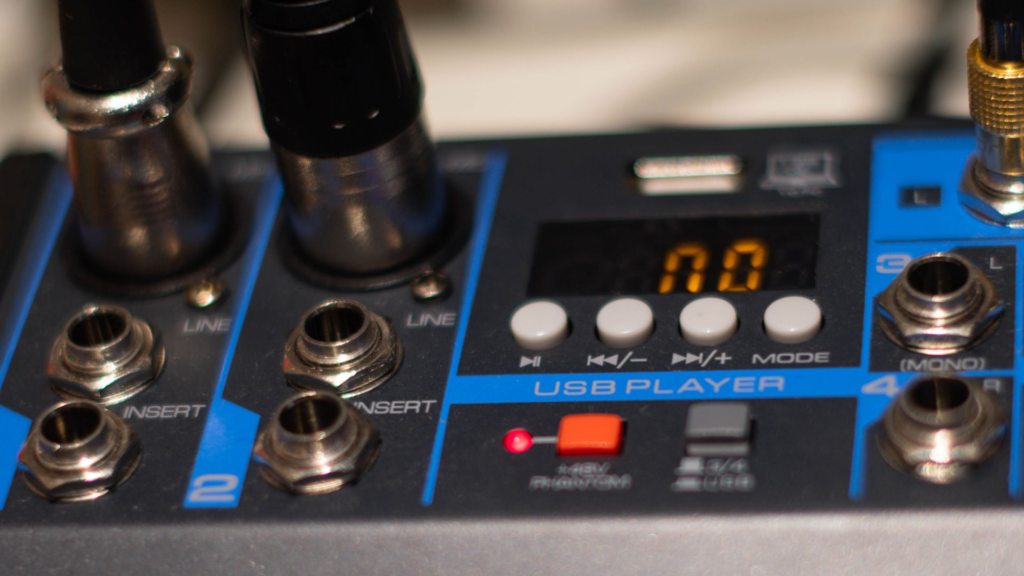
In this blog post, we outline 7 steps to Podcast editing.
- Cut out any extra or unnecessary dialogue
- Remove any pauses or “ums” that don’t add to the conversation.
- Edit out any mistakes or technical issues.
- Adjust the audio recordings so that all participants can be heard clearly.
- Remove any background hum/buzz or other unwanted noise.
- Add any effects or music to enhance the podcast.
- Adjust the length of the podcast to fit the desired format.
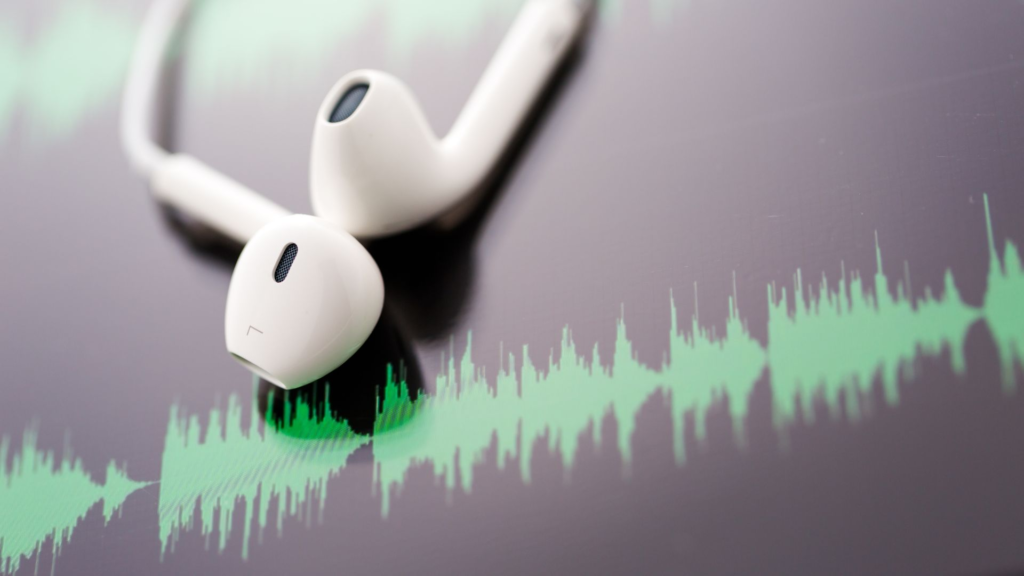
1. Cut out any extra or unnecessary dialogue
The first step in post-production is to trim any unnecessary dialogue from the audio recordings. This includes tangents, irrelevant jokes, or anything else that doesn’t add value to the conversation. This will help build a compelling story.
Niall Mackay, the founder of Seven Million Bikes Podcasts, recommends cutting out anything that would detract from the overall message of the show.
“When editing, I always ask myself if this particular section is adding value to the conversation,” Niall says. “If the answer is no, then it needs to be cut out.”
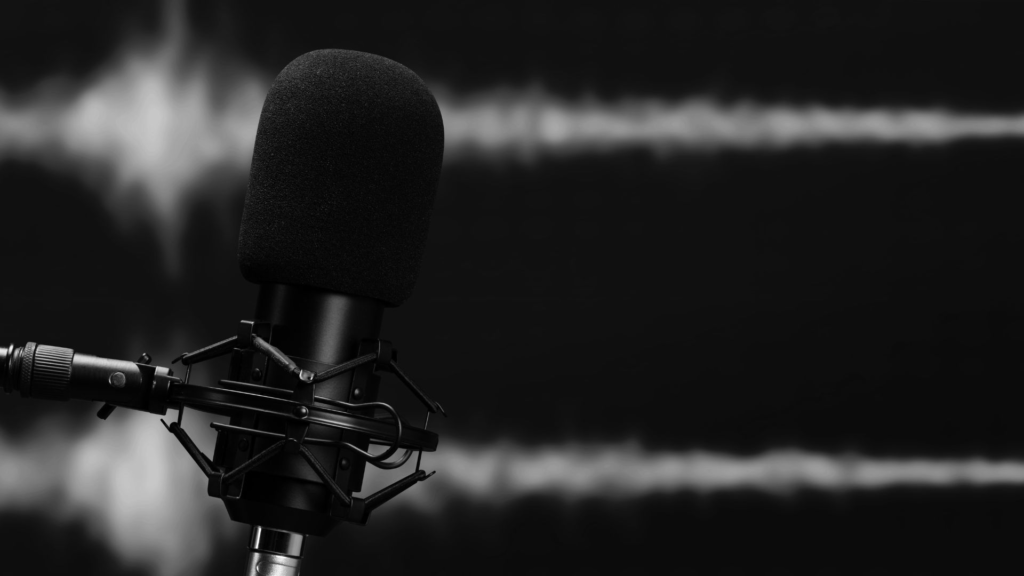
Cutting out extra or unnecessary dialogue from the podcast audio can greatly improve the flow and pacing of the episode. Here are a few steps to help you achieve that:
- Listen to the entire recording: Before you start cutting anything out, listen to the whole recording from start to finish. This will help you get a sense of the pacing and flow of the conversation.
- Identify the parts to cut: Identify any sections of the recording that are off-topic, repetitive, or don’t add value to the conversation. It’s important to remember that just because a section doesn’t add value to the current episode doesn’t mean it’s not valuable content. You may be able to use the section in a future episode.
- And when podcast editing with Descript you can edit like a Doc you can also cut the words out and the audio will be cut too. “For my money, Descript is the best podcast editing software. But the program isn’t perfect , so make sure to listen to any changes you make” Niall warns.
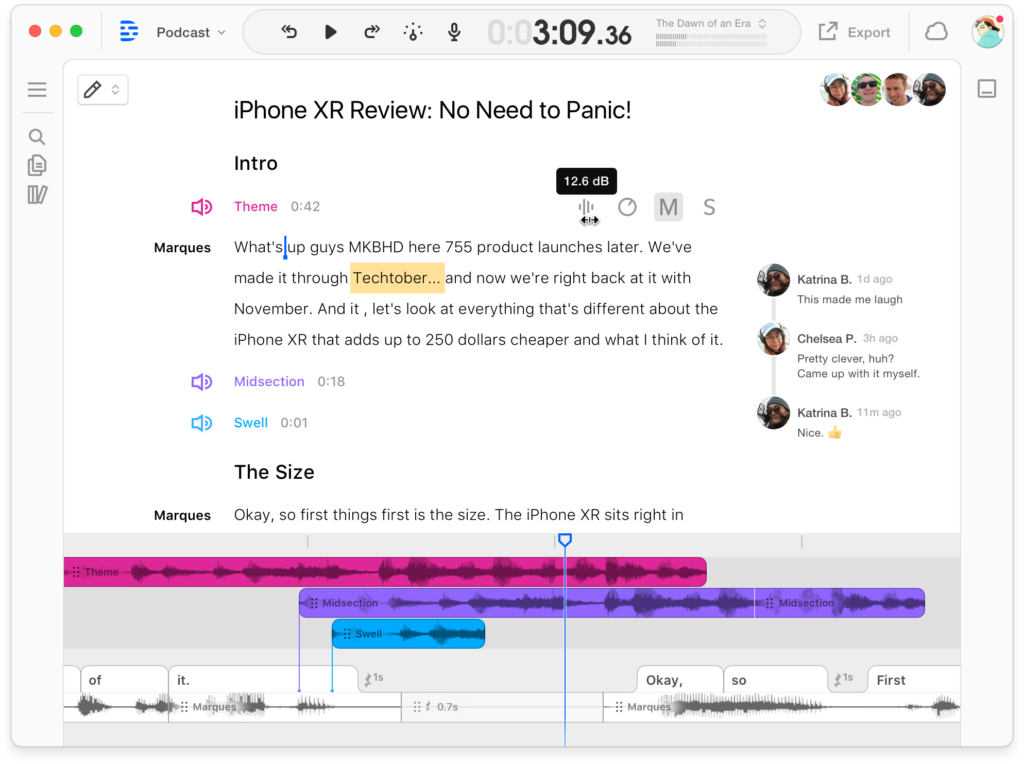
- Smooth out the cuts: After you’ve made the cuts, have one final listen to the cut to make sure it flows smoothly. If the cuts sound abrupt or jarring, you may need to add a transition or fade to smooth them out.
- Save a backup if not using Descript: Always make sure to save a backup of the original recording before making any cuts.This way, you can always go back and retrieve any content that you may have accidentally cut.
- If you do take Niall’s advice and use Descript as your recording software, the Composition you will be editing on does not affect the original audio and it is synced to the cloud at all times so you don’t lose anything.If you do have to go back you can also find previous versions of the Project. Another benefit of Descript as your podcast editing software is that you can add multiple files into one podcast audio track and edit from there. The original files will be untouched. Remember that podcast editing takes time and practice, so don’t be too hard on yourself if it takes a few tries to get it right. With practice, you’ll get better at identifying unnecessary dialogue and making the cuts that improve the overall quality of your podcast.
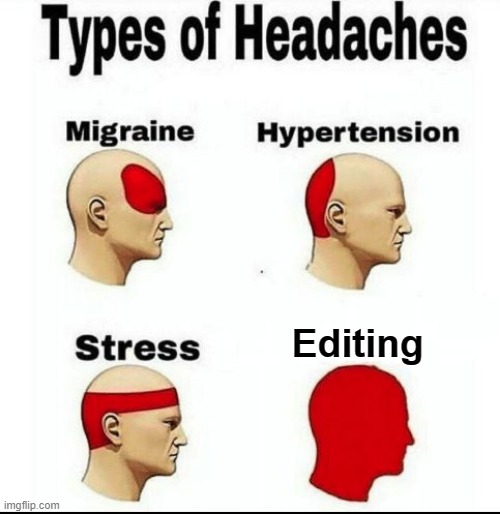
2. Remove any pauses or “ums” that don’t add to the conversation
Pauses, filler words, and other verbal tics can be distracting to listeners. An audio editor removing these can help improve the flow of the conversation and make it more engaging.
Niall recommends being judicious in removing these verbal fillers, as they can add personality to the speakers.
“You don’t want to remove all the ums and ahs,” Niall says. “But if there are long pauses or excessive filler words, it’s best to edit them out.”
When podcast editing follow these steps to remove any pauses or “ums” that don’t add to the conversation in a podcast:
- Import the audio file into Descript or the digital audio workstation you are using.
- Listen to the podcast episode and make note of the times when there are long pauses or “ums”.
- Use Descript to select the unwanted sections and delete them. IMPORTANT: Work backwards.If you start at the beginning as soon as you make an edit all the times you’ve noted down will no longer be accurate.
- To remove the “ums”, use the Blade or Range tool to cut out the section of audio that contains the “um”.Make sure there is a smooth transition between the two remaining sections of audio.
- Listen to it again to ensure that the conversation flows smoothly without any awkward pauses or “ums”.
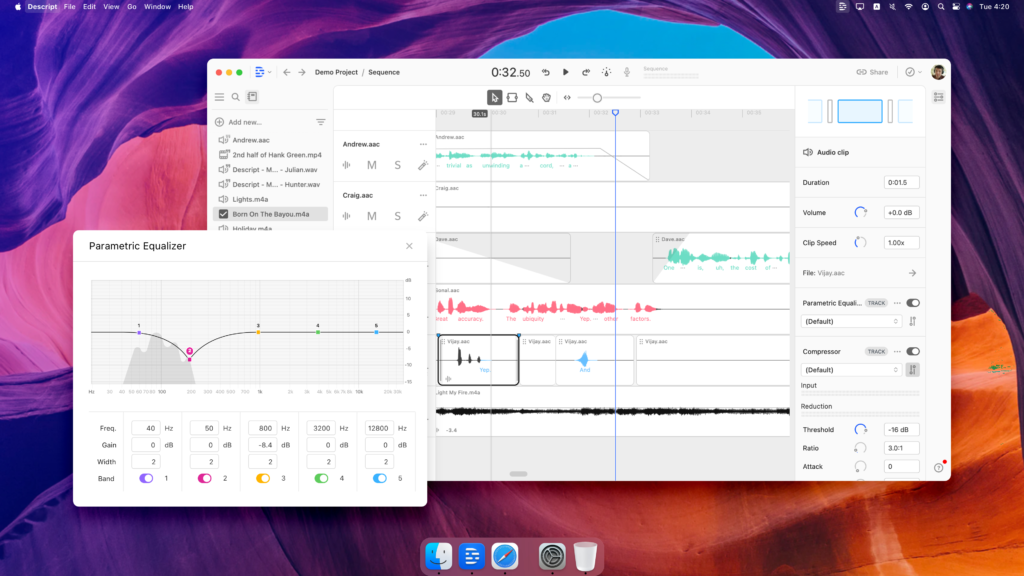
3. Edit out any mistakes or technical issues
Mistakes happen, especially when recording. It’s essential to fix any errors or technical issues to ensure the final product is of high quality.
Niall recommends listening carefully to the recording to identify any mistakes or technical issues.
“Sometimes, it’s as simple as cutting out a sentence or two,” Niall says. “Other times, you might need to re-record a section or add a sound effect to mask the error.”
Here are the general steps to edit out any mistakes or technical issues:
- Review the completed episode and make note of any mistakes or technical issues that need to be addressed when listening for the Ums, Ahs, and long pauses.
- Use the audio editing software Descript or whatever DAW you are using to listen redcording.
- Use the podcast editing tools, such as the Range or Blade tool, to remove the mistake or technical issue.
- Smooth out any abrupt transitions or clicks caused by the edit by using crossfades if you need to. Descript has built-in AI automated tools that will usually be smooth as long as there is no noise.
- Repeat this process until all mistakes and technical issues are removed.
- Once you are satisfied, listen to the entire episode to make sure there are no new issues or mistakes created during the editing process.
Remember, editing can be time-consuming, so it’s essential to have patience and a good ear for detail.
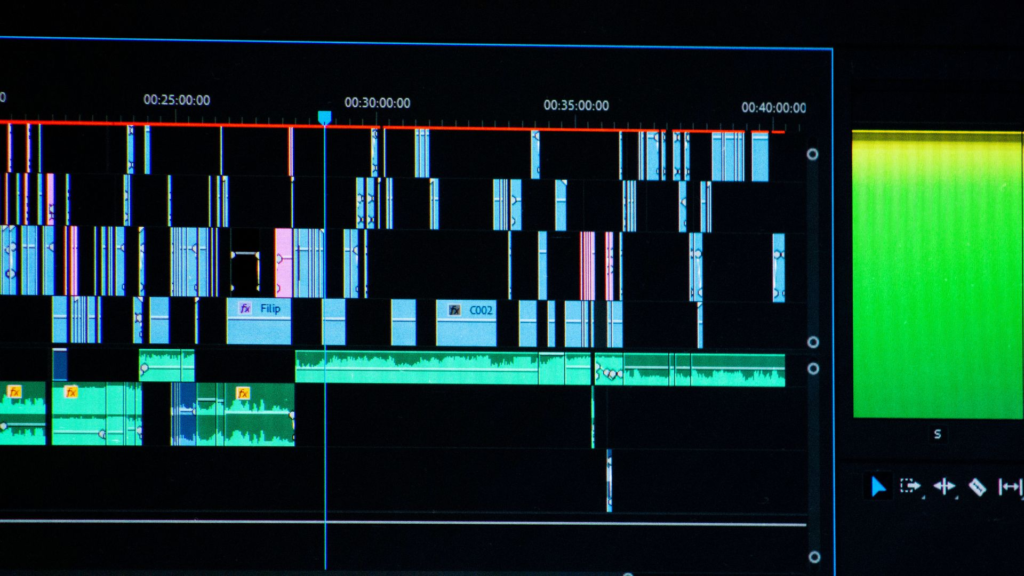
4. Adjust the audio so that all participants can be heard clearly
One of the essential aspects of podcasting is ensuring that all participants can be heard clearly. This requires adjusting the audio levels to ensure that everyone’s voice is audible.
Niall recommends using compression and equalization to adjust the levels of each participant’s voice.
“You don’t want any one person to be louder than the others,” Niall says. “Compression can help level out the volume, while equalization can help make each person’s voice distinct.”
- Import the audio files into Descript, or an audio editing software, such as Audacity, Adobe Audition, or GarageBand.
- Listen to the entire recording and make note of any sections where one or more participants are too quiet or too loud.
- Use the “Normalize” function to balance all the audio levels of the entire recording. This will ensure that the overall volume is consistent throughout across multiple tracks.
- Use the “Compressor” effect to reduce the volume of loud sections and increase the volume of quiet sections. This effect can be used to even out the levels of individual tracks.
- Use the “Equalizer” effect to adjust the levels of specific frequency ranges. For example, if a participant’s voice is too bass-heavy, use the equalizer to reduce the bass frequencies.
- Use the “Noise Reduction” function to remove background noise. This can be particularly useful if there are multiple participants in a noisy environment.
- Or, use Descript, turn on Studio Sound and the AI magic will do most of the work for you with the click of a button!
- Finally, listen to the entire recording again to ensure that all participants are audible and that the volume levels are consistent. Adjust the levels as necessary.
In conclusion, editing audio requires a combination of technical skills and a good ear for sound. By following these steps, you can ensure that all participants are heard clearly and that when you edit your podcast, it is of high quality.
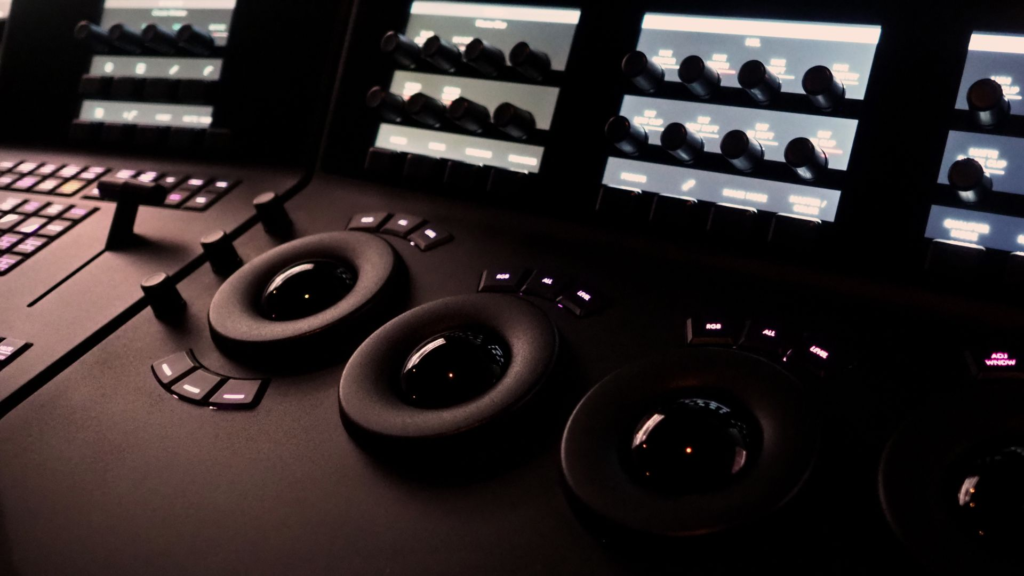
5. Remove distractions
Background noise, such as traffic or other people talking, can be distracting to listeners. Removing these distractions can help improve the quality of the podcast.
Niall recommends using noise reduction tools to eliminate any unwanted noises in the background from the entire episode.
“Sometimes, you can’t avoid background noise,” Niall says. “But using noise reduction tools can help minimize any distractions and keep the focus on the conversation.”
Here are some tips to remove that noise or other distractions when recording:
- Choose a quiet recording environment: Try to record in a space that is free from noise and other distractions. This can be a quiet room or a soundproofed space.
- Use a quality microphone: Invest in a good quality microphone that can pick up your voice clearly without picking up any other sounds in the background. A Dynamic Microphone is recommended over a Condenser microphone.
- You can read more about that in our post about microphones.
- Record in a smaller space: If you can’t find a quiet environment, try to record in a smaller space, such as a closet or a small room, which can help absorb background noise.
- Use noise-cancellation tools: Several hardware and software tools can help reduce background noise, such as soundproof foam, noise gates, and equalizers.
- Edit the recording: Finally, you can use podcast editing software to remove any unwanted sounds or noises from the recording, such as using noise reduction tools or cutting out sections with background noise.
- If each speaker has their own microphone you can cut the noise out from just one of the audio tracks. WARNING: Only do this if you have the time to spend editing audio!
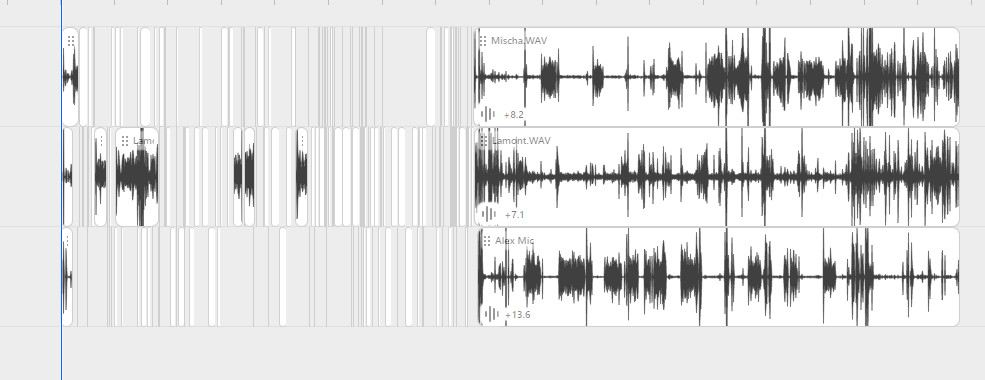
6. Add any effects or music to enhance the podcast
Sound effects and music can add depth and atmosphere to a podcast. Adding these elements can help engage listeners and make the podcast more entertaining. Niall recommends using these judiciously to avoid overwhelming the conversation.
You may also have to add pre-recorded podcast intros.
“You want to use sound effects and music to enhance the conversation, not detract from it,” Niall says. “Be selective in your choices and use them sparingly.”
And the most important rule of all… don’t use copyrighted music unless you have permission from the rights holder.
Here is how to add sound effects or music to your podcast:
- Choose the audio you want to add to your podcast. You can use free music and sound effect libraries or purchase them from stock music websites.
- Download the music or sound effects to your computer.
- Import the sound effects or music to your podcast editing software such as Descript.
- Place the sound effects or music at the appropriate points in your podcast. You can use the timeline of your editing software to match the sound effects or music with the relevant parts of your podcast.
- Adjust the volume of the sound effects or music to match the overall volume of your podcast. Familiarize yourself with Ducking.
- Preview your podcast with the added sound effects or music tracks to ensure that they enhance the overall quality and impact of your podcast.
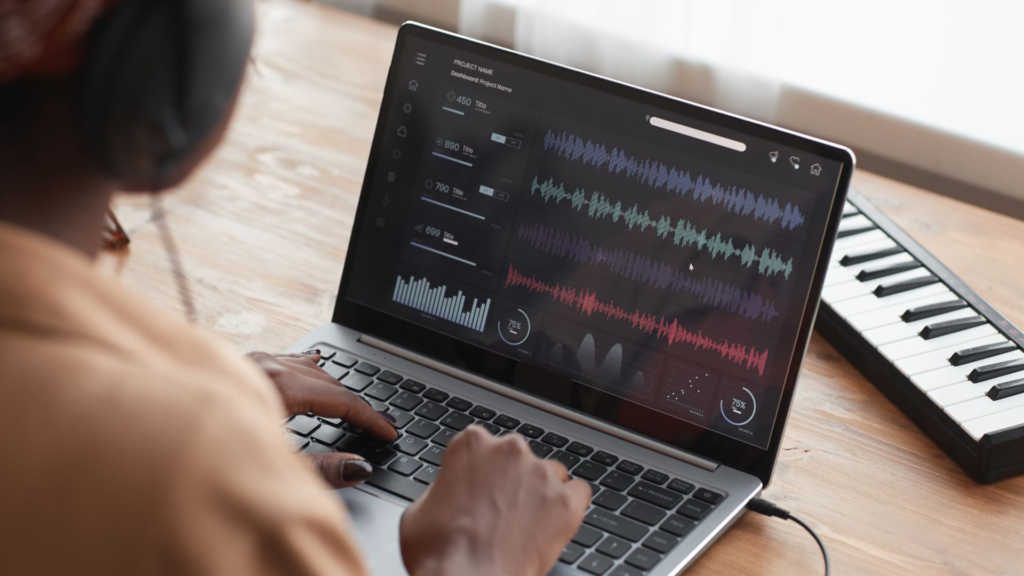
7. Adjust the length of the podcast to fit the desired format
Adjusting the length of a podcast is a critical aspect of podcast audio editing. When creating a podcast, it is essential to keep in mind the desired format and length of the show.
Some formats require longer shows, while others require shorter shows.
It’s essential to keep the show concise and engaging. This means cutting out unnecessary information and getting straight to the point. Consider breaking down the content into smaller chunks that can be easily digested.
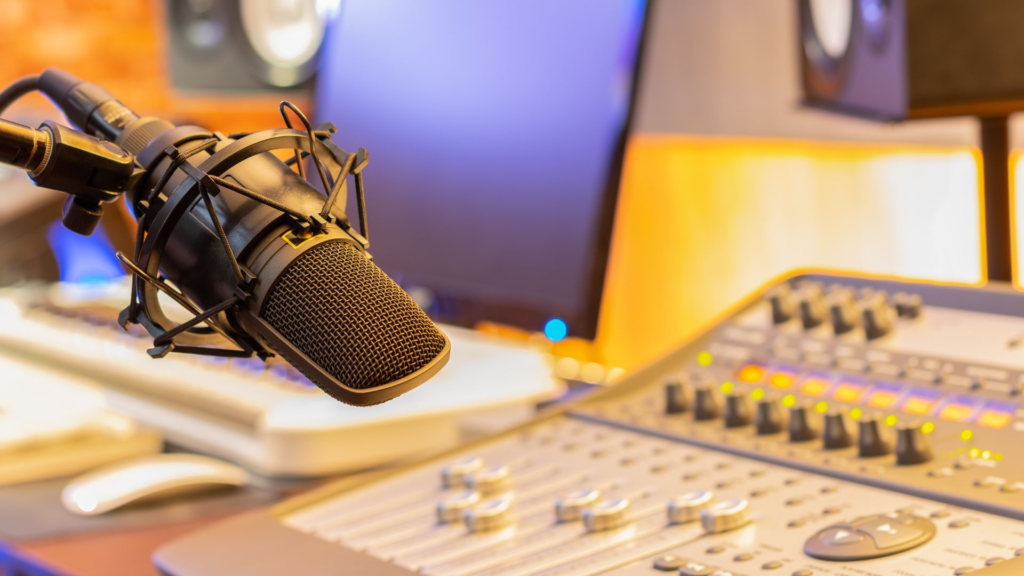
Secondly, good editing plays a crucial role in adjusting the length of the podcast. Editing can help trim the show’s length by removing all those filler words, pauses, and tangents.
When listening to the podcast, it is also a good idea to identify parts that can be cut without affecting the show’s quality.
Lastly, it’s essential to test the length of the podcast before releasing it to the public. This means getting feedback from beta listeners and making adjustments accordingly.
A podcast that is too short or too long can affect the listener’s experience, so it’s crucial to find the right balance.
A lot of this comes down to good editing. With these tips, you can create a successful podcast that meets your desired format and length.
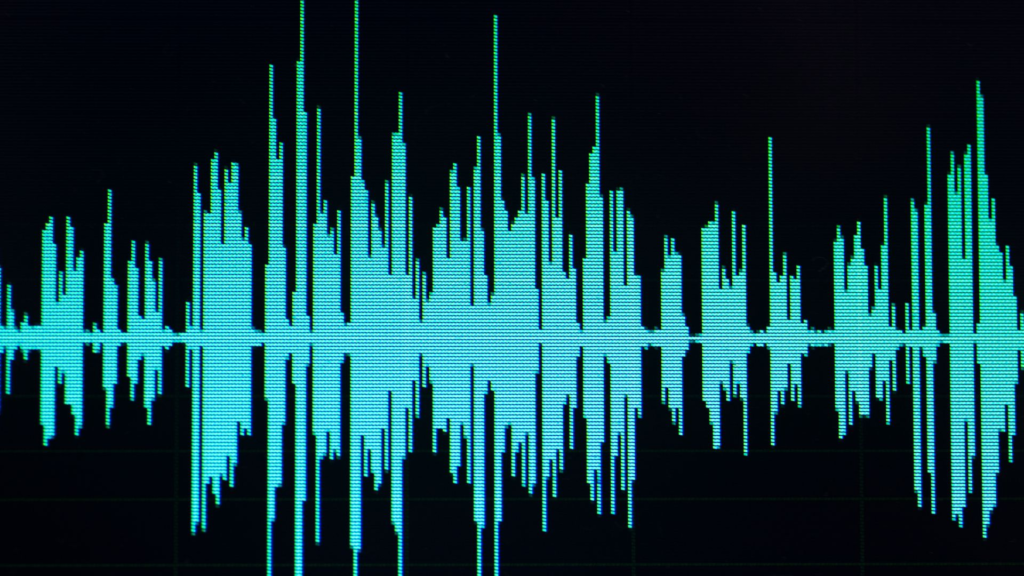
Adjusting the length of a podcast is a critical aspect of podcast audio editing. When creating a podcast, it is essential to keep in mind the desired format and length of the show.
Some formats require longer shows, while others require shorter shows.
Here are some tips on how to adjust the length of the podcast to fit the desired format.
- Listen to the recording and cut out any unnecessary parts that are irrelevant or do not add value to the podcast.
- Edit the conversation flow and ensure the discussion is concise, clear, and on-topic.
- Cut out long pauses and unnecessary gaps.
- Consider splitting the podcast: If it is too long, consider splitting it into multiple episodes. This can help maintain audience engagement and make the content more digestible.
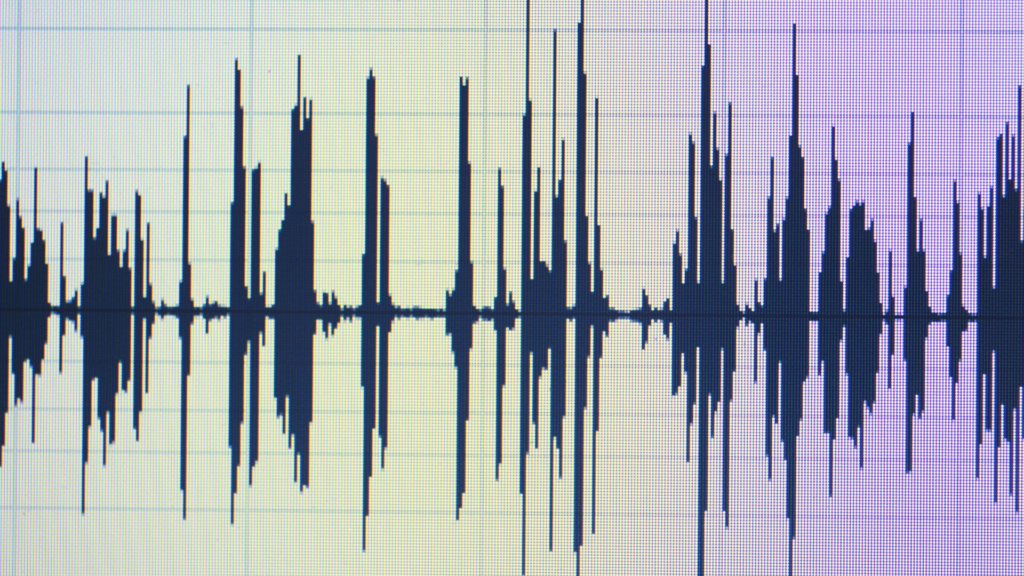
FAQs
Is it a full-time or part-time job?
Podcast editors can be hired as part-time or full-time employees for a company or freelance contractors from third-party platforms like Fiverr.
Sometimes podcast editors have to join the podcast studios and be present during the audio recording.
A regular job posting covers the following responsibilities:
- Post-production process
- Remove background noise, echo, and filler words
- Following instructions from the pre-written podcast episode outline
- Publish podcasts as needed.
If delivering great audio quality and the technical aspects sounds like the job for you then keep reading to find out what skills you need to fit the job!
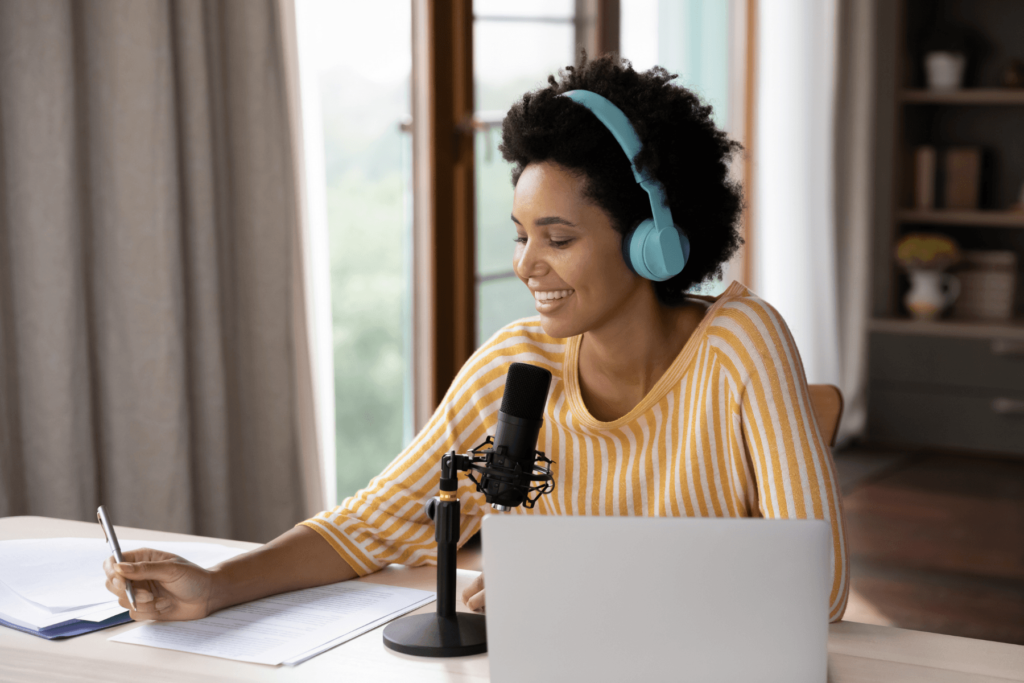
How to become a podcast editor?
Podcasting is a profitable marketing avenue. Therefore, you should thrive on an outstanding balance of soft and hard skills. If you want to become a podcast editor, try experimenting with pro tools like iMovie, Audacity, or GarageBand.
Many of these have a free version with more advanced features if you pay for the full features. Besides, GarageBand is a free podcast editing software if you already own a Mac.
Our guide on podcast editing with Descript will help you edit your podcast with this software. Whether you are new or experienced Seven Million Bikes Podcasts recommends Descript as the best podcast software to edit your podcast.
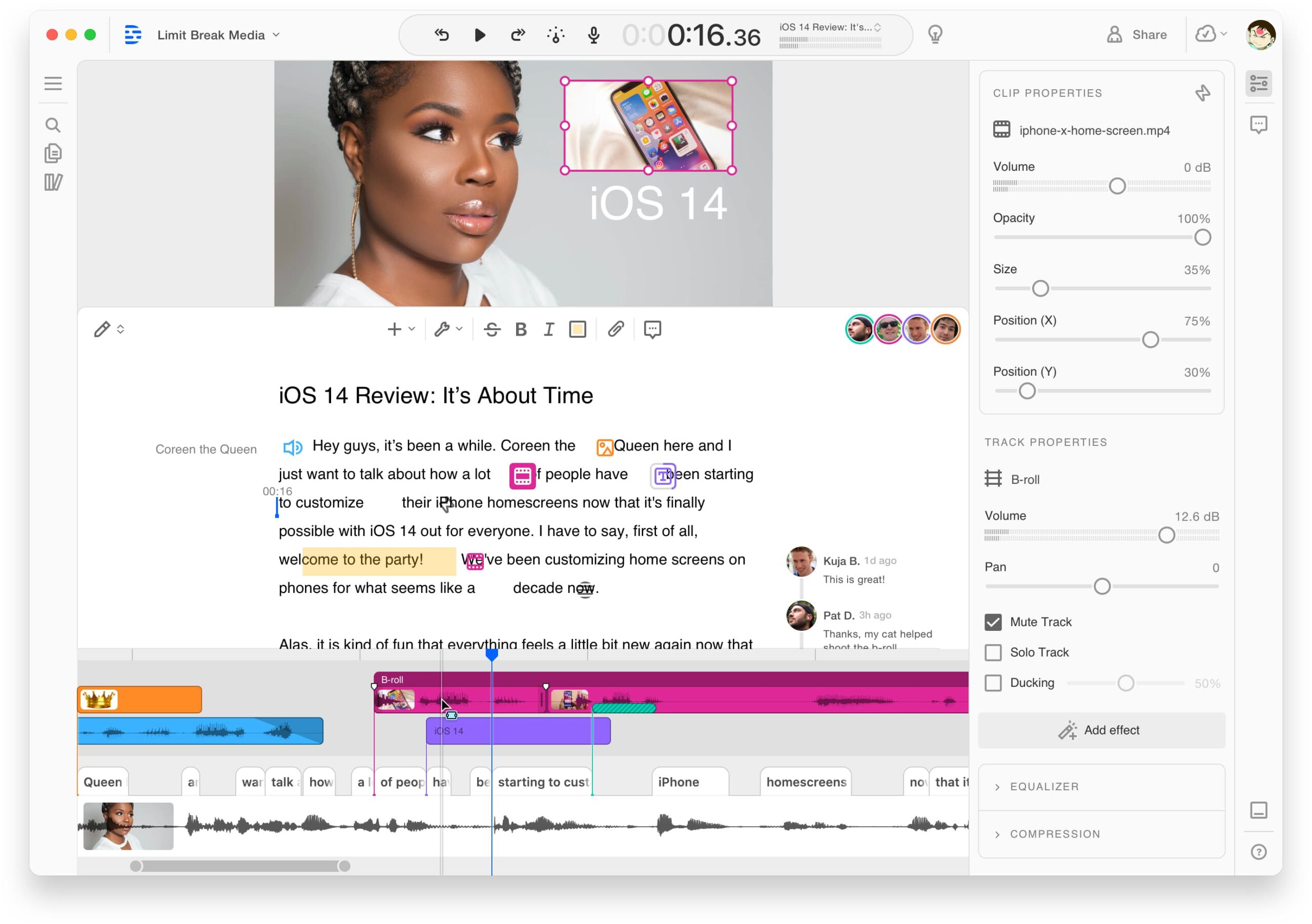
Build A Portfolio
Create your own podcast then offer free audio editing to build a solid portfolio. These small projects help you practice and showcase your audio editing skills before applying for a new job.
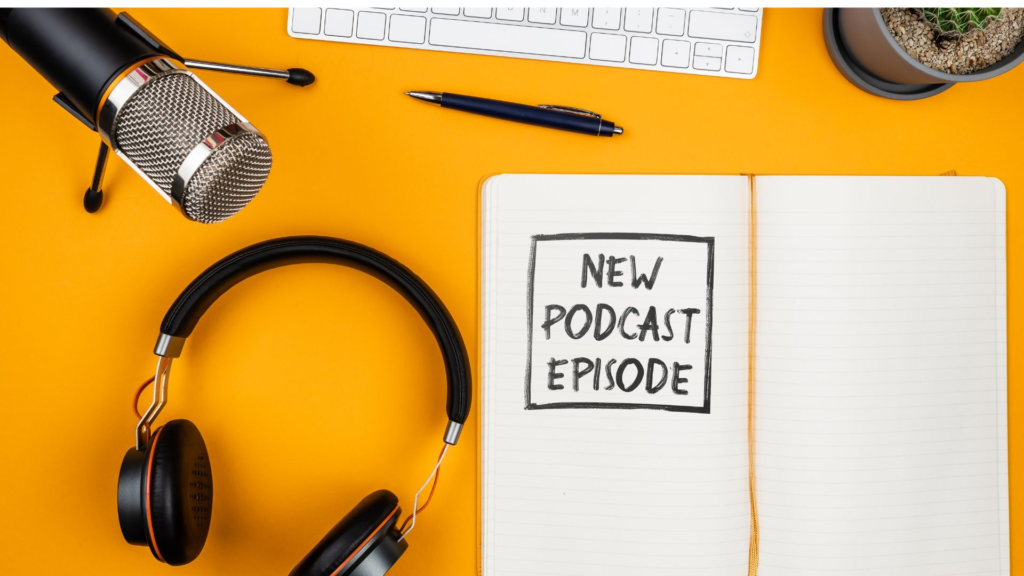
Plus, you can practice with free software like Audacity or GarageBand, then invest in a more advanced podcast editing software like Descript.
You must familiarize yourself with these pro tools. There are often more than one editing solutions to fix the audio, so practice various techniques. Alternatively, you can apply as an intern. These 3-6 months internships could be another way to gain relevant experience as an editor. However, companies might not give you as much creative freedom as you could do on your own.
Practice Soft Skills
A podcast show usually has a whole team to plan, produce, edit audio, and publish episodes. Therefore, your communication and teamworking skills are critical too. One way to practice your communication skills is to go out there and start networking. Whether virtual or in-person meet-ups, make sure you understand why you want to find new networks.

What Skills Do You Need To Edit Audio?
Hard skills:
- Experience with 3rd party plug-ins for EQ, compression, noise reduction, and mastering
- Video editing, often Multicam, to make a video cut of a podcast (if needed)
- Advanced audio and video and sound design production skills
- Use professional tools for business such as Google Suite, Slack, and Asana.
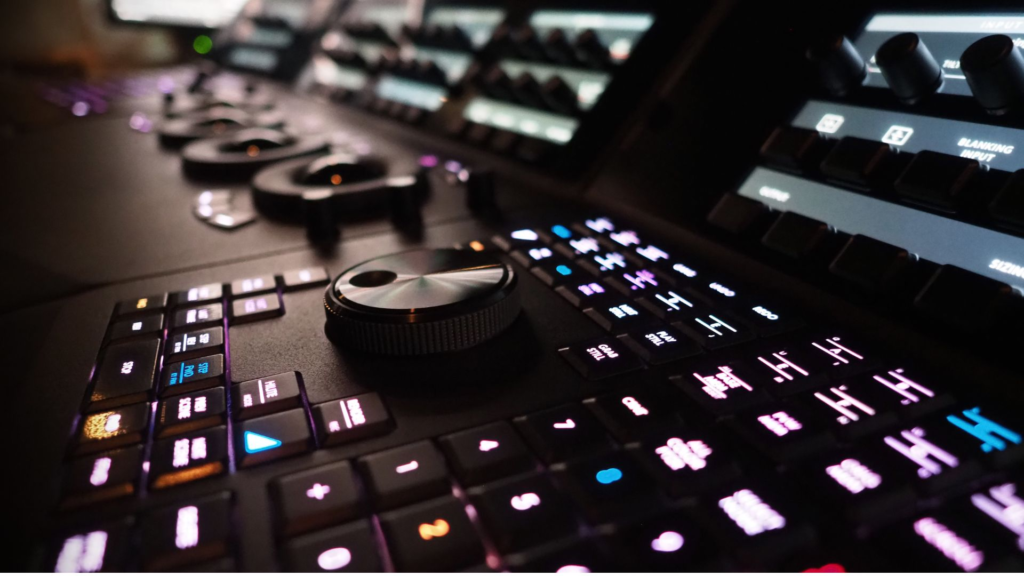
Soft skills:
- Excellent communication skills
- Timeline Focused
- Creative
- Teamwork
- Ability to collaborate well with a team
- Be comfortable with autonomy and take responsibility for work
- Responsible and professional (i.e. make deadlines, communicate, and curse a bit)
Bottom line: Whether you plan to be a freelance editor or seek a full-time position, I recommend building a solid portfolio before applying to any job and working on your interpersonal skills.
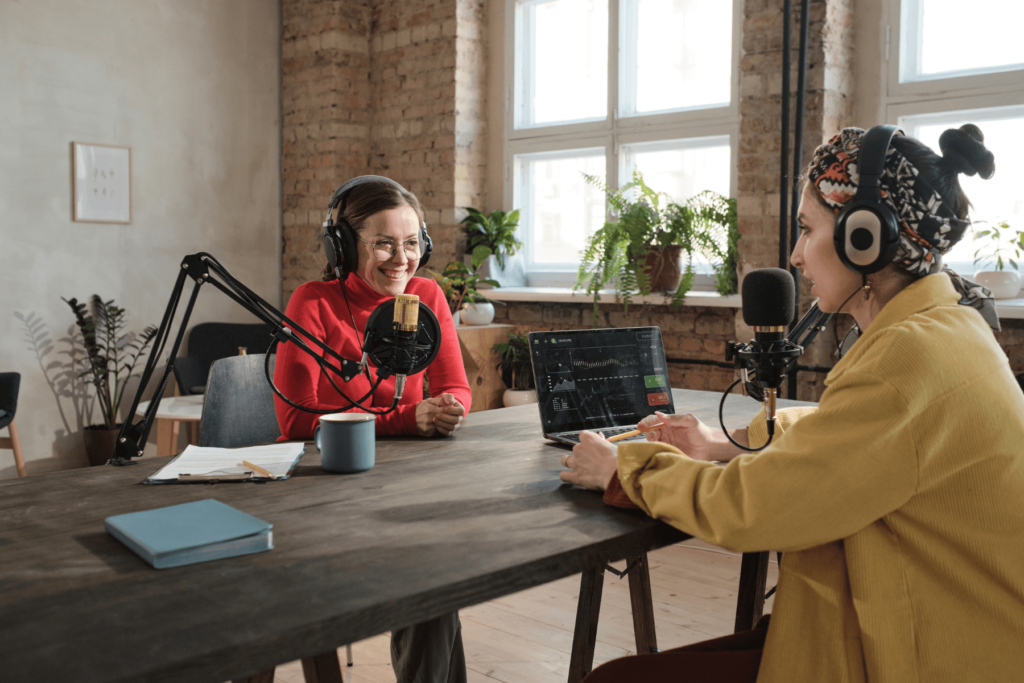
How hard is it to edit a podcast?
Podcast editing takes time. – Roughly, an editor can spend around 3-5 minutes of editing per 1 minute of podcast recording. Plus, the difficulty level depends on the quality of podcast recordings too.
When podcast editing many editors charge based on episode minutes because removing background noises, echoes, and other irrelevant content to fit the outline can be tedious. Furthermore, every show has its requirements for editors, making the scope of work a lot more diverse and complex.
For instance, if you’re needed for video editing too, color editing and visual effects should be familiar tasks. Thus, I recommend getting as much experience doing small projects to get used to the complexity and diversity of an editor.
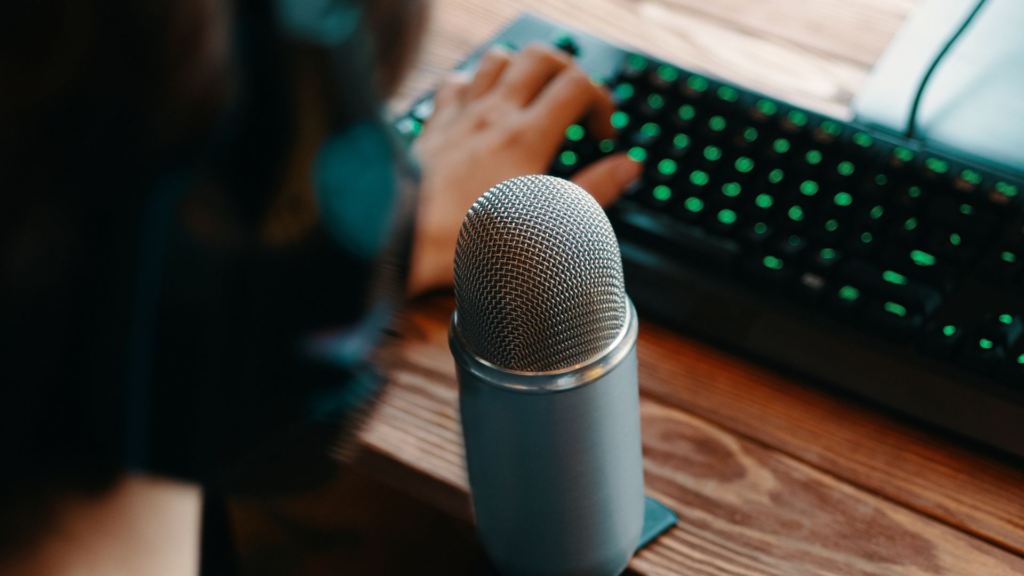
How much should you charge?
According to ZipRecruiter and Glassdoor, the average annual income of a podcast editor falls between 55,000 USD to 77,000 USD in the U.S. This breaks it down into around 4,600 to 6,500 USD monthly salary.
Hopefully, this can help in your next salary negotiation if you apply to companies for an available role in podcast editing. Remember, though, that this range is estimated in the U.S. market. If you apply to other countries, the numbers could be lower. However, podcast editing is still a growing and demanding position.
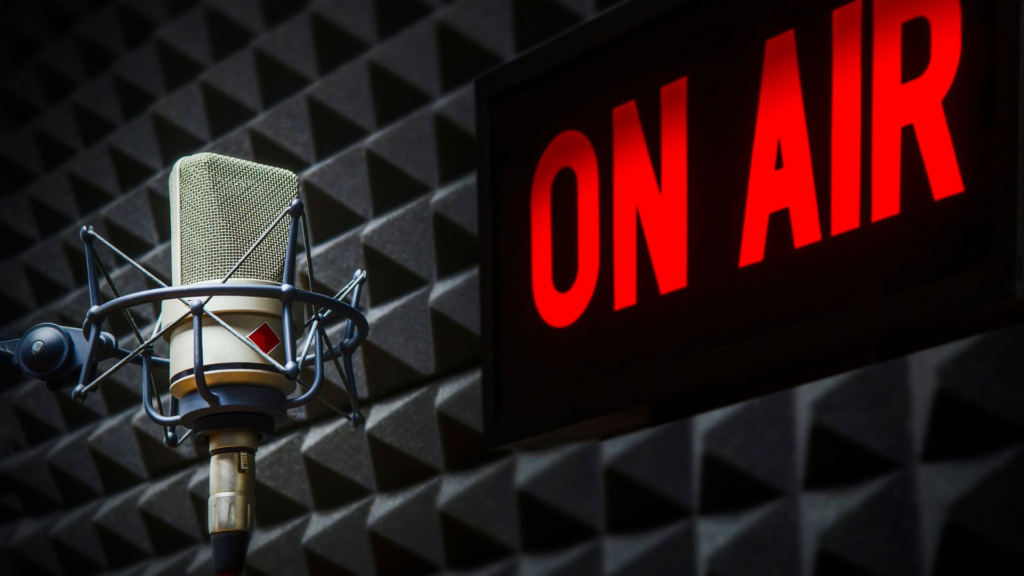
Freelance Podcast Editors
Many podcast editors start as freelancers to build their portfolios of podcast content and gain experience using podcast editing software. In other cases, a freelancer could make even more money by taking on better projects with higher hourly rates.
For starter podcasters, you can charge clients per episode. For beginners, your podcast editing rates can be 20 USD per 30-minute episode and up to 40 USD for anything up to 60 minutes. These numbers can double or triple based on recommendations, client reviews, and skillsets.
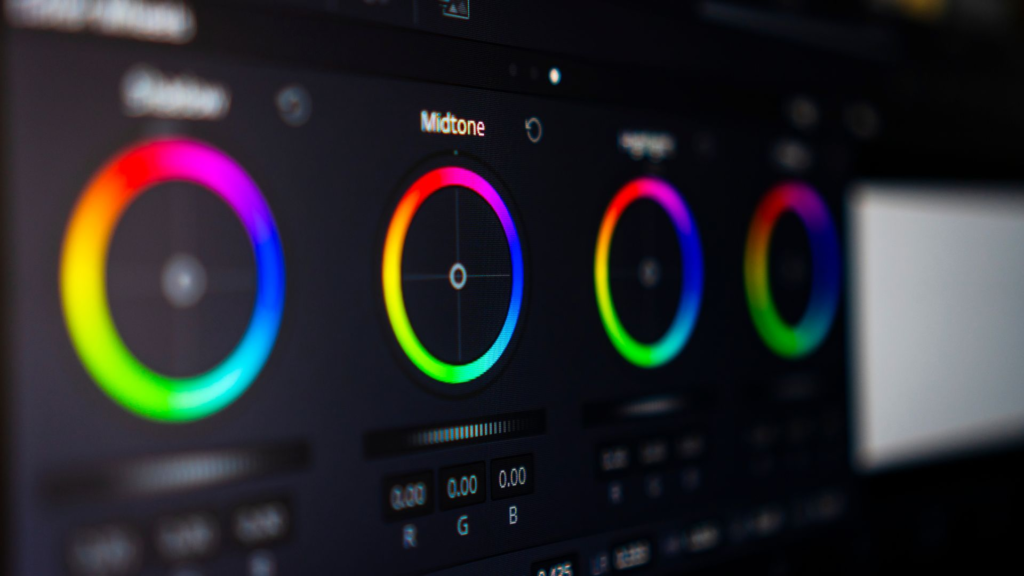
Conclusion
In conclusion, podcast editing is a crucial aspect of producing high-quality audio content that can engage and inform listeners. Niall Mackay’s Seven Million Bikes Podcasts offers a useful example of how to approach podcast editing, with an emphasis on researching and organizing topics, scripting the content, and carefully selecting the right guests and sources for interviews.
As Mackay notes, effective podcast editing requires a willingness to challenge one’s own assumptions and biases, as well as a commitment to maintaining a clear and concise structure that keeps listeners engaged.
Whether you are producing a podcast for entertainment or educational purposes, podcast editing can help you refine your message and reach your target audience more effectively. With the right tools, techniques, and mindset, any podcaster can improve the quality and impact of their content and build a loyal and engaged following of listeners.

Become A Podcast Editor With SMB Podcasts
To sum up, you can start a career in podcast editing with little to no experience and find yourself becoming a super valuable asset to any podcast show. Podcasting will not decline any time in the future, and starting your podcast portfolio can bring you tons of opportunities! Remote positions, lucrative salaries, and a wide cast of networks.
If you are interested in starting your podcast, sign-up for my brand new podcast course and receive a ton of first-hand experiences and insights into the podcasting game.
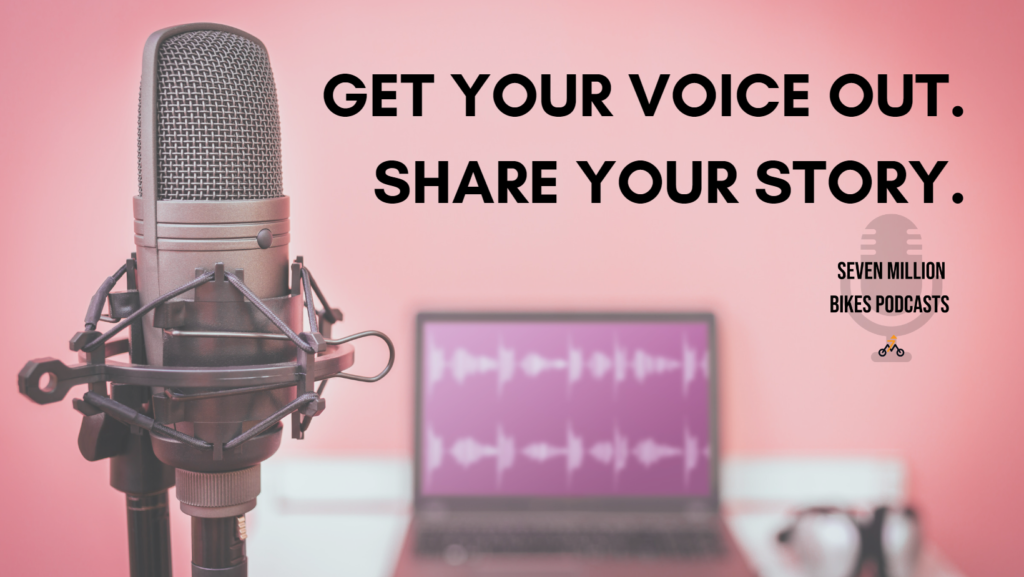


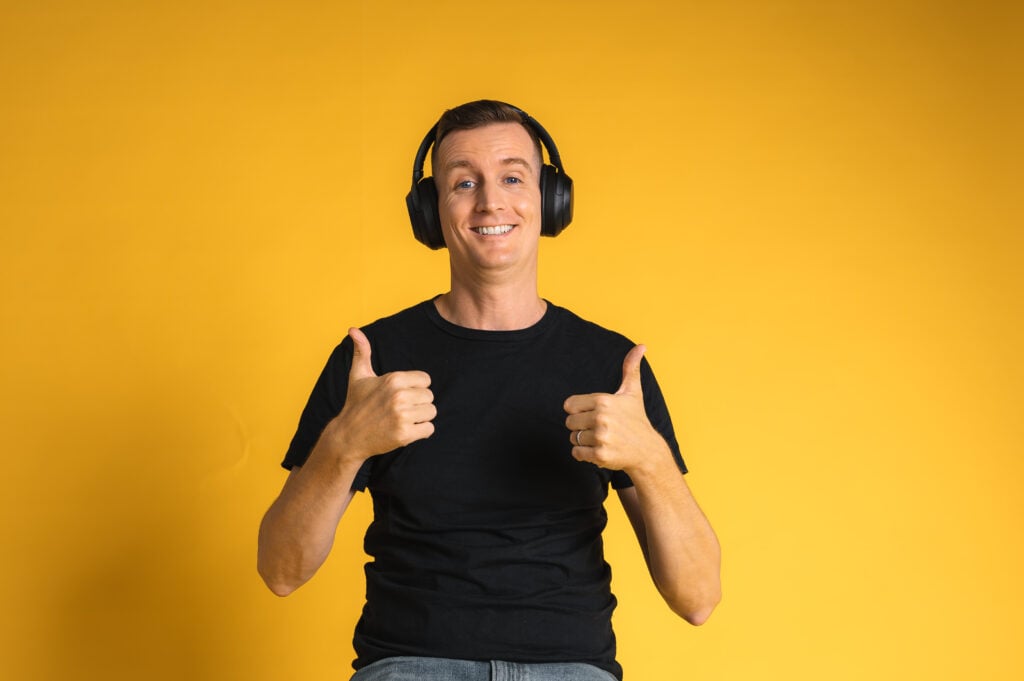
1 thought on “How To Become A Podcast Editor – 7 Steps For Podcast Editing”